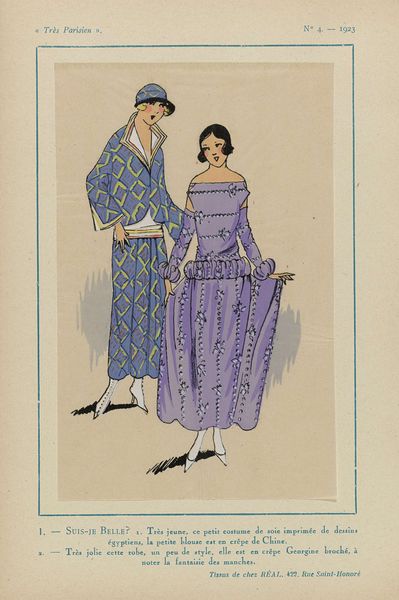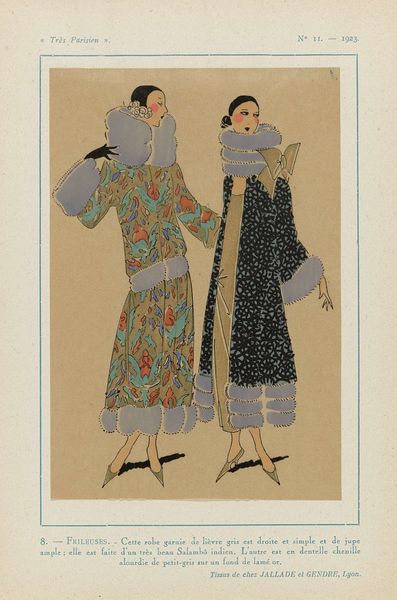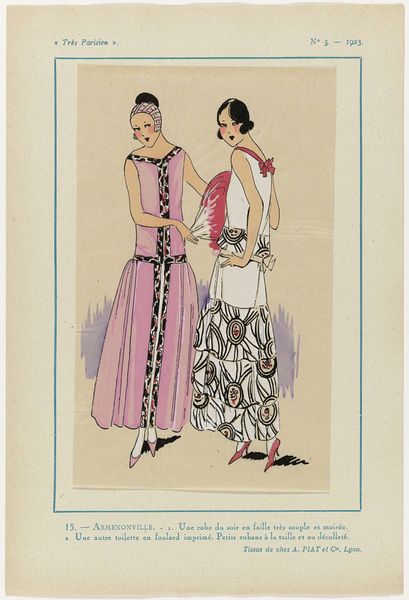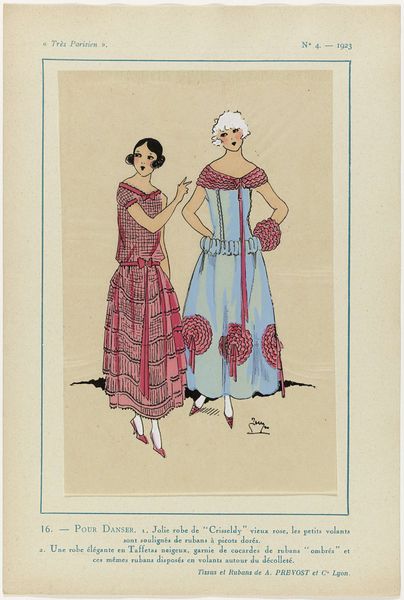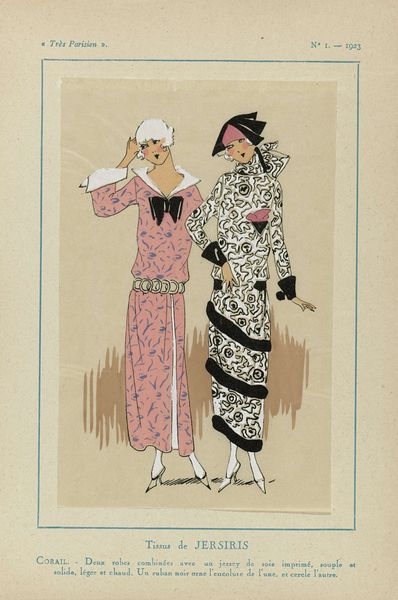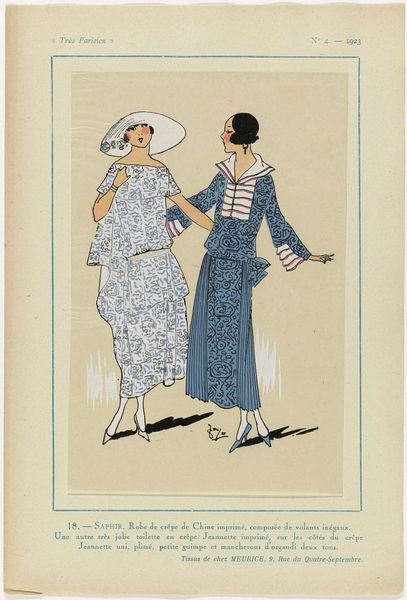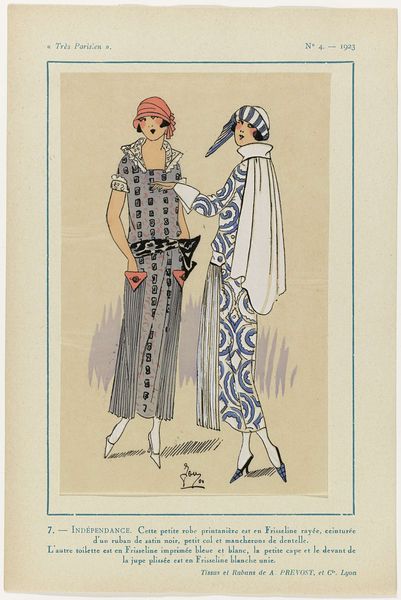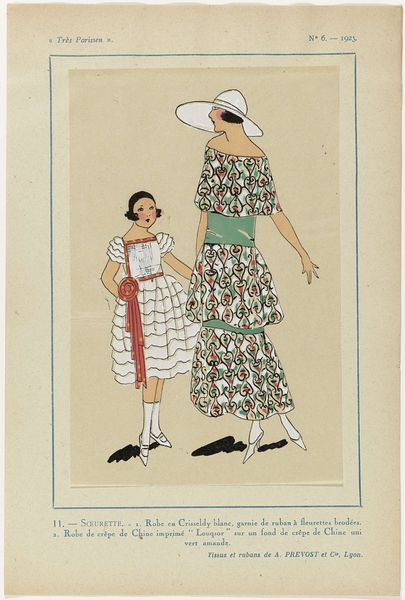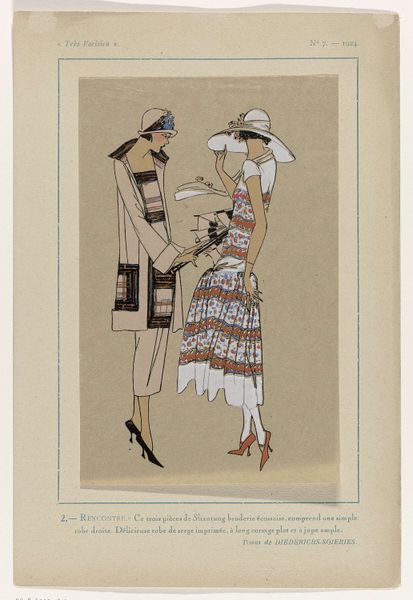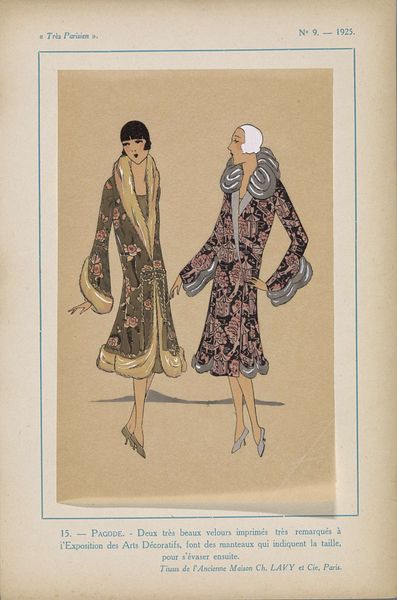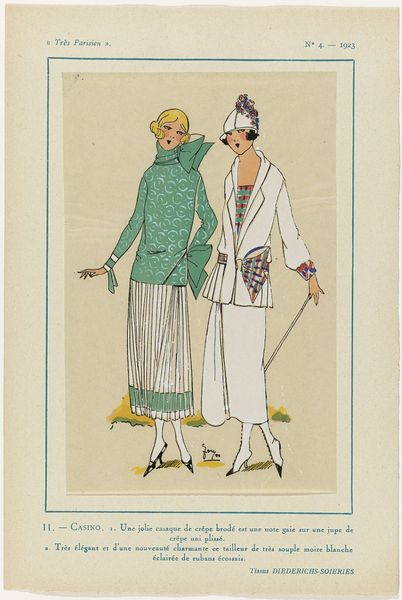
Très Parisien, 1923, No 11: 15. - AU BAL. - Cette robe de velours... 1923
0:00
0:00
anonymous
Rijksmuseum
drawing, mixed-media, print, graphite
#
art-deco
#
drawing
#
mixed-media
# print
#
traditional media
#
figuration
#
feminine colour palette
#
flat colour
#
historical fashion
#
graphite
#
genre-painting
#
decorative-art
#
dress
Dimensions: height 269 mm, width 180 mm
Copyright: Rijks Museum: Open Domain
Curator: Here we have "Très Parisien, 1923, No 11: 15. - AU BAL. - Cette robe de velours..." from 1923, housed at the Rijksmuseum. It’s a mixed-media print incorporating graphite and other materials. Editor: The overall impression is strikingly chic! I'm immediately drawn to the Art Deco style and the somewhat muted yet feminine color palette. The flat color application gives it a very graphic quality. Curator: Indeed, its essence resides in capturing the decorative arts movement. Examining the materials, note the intention. The graphite and mixed media used for the print served a specific purpose – likely efficient reproduction for fashion dissemination. This wasn't necessarily high art. Editor: I see a strong interplay between the clothing and what they represent socially. It seems this historical fashion—the velvet dress, cape— speaks volumes about a desire for elegance. Perhaps about the modern woman's burgeoning confidence? Curator: Exactly. Velvet's inherent value and tactile richness must have contributed to a specific visual narrative of aspirational bourgeois lifestyles. The production techniques reveal more than just the finished product; they speak about the audience being addressed. Editor: I find the recurring rose motifs interesting. We find these throughout history, frequently linked to ideas of beauty, sensuality, love, or even fragility. Do you feel they relate to these connotations, here? Curator: Given the industrial context of its production, my inclination is towards thinking less about its symbolic roots and instead interpreting its application here as another consumable, fashionable element. The labor that goes into pattern creation shouldn't be underestimated! Editor: I suppose we are both taking elements from it that most interest us, then. It’s such an evocative image. I wonder about the lives of the women who may have worn such garments at the time. Curator: And what these materials meant to both the creators and consumers in 1923. I find such details just fascinating.
Comments
No comments
Be the first to comment and join the conversation on the ultimate creative platform.
